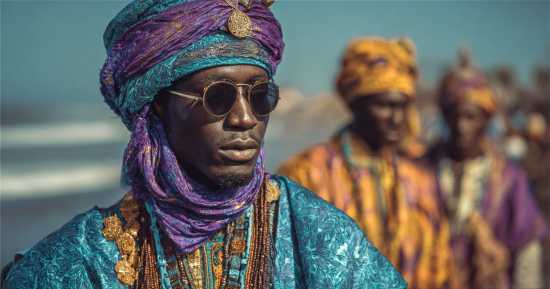
The Senegalese History Quiz invites you to step into a world where vibrant traditions, bustling markets, and centuries-old customs reveal the depth of this West African nation. Senegal’s history thrives in its music-filled streets, in the wisdom passed down through generations, and in the architecture that blends ancient craftsmanship with modern expression. Its people live with a proud sense of cultural identity that echoes through every festival and gathering. Families share ancestral stories that illuminate how the past continues to shape the present. From the coastal cities to inland towns, every region holds its own narrative woven into the national fabric. Senegal’s history is not locked in books—it is alive and celebrated daily.
The Senegalese History Quiz also explores how Senegal’s cultural and historical identity developed alongside global events. Once a vital center of trade, its ports became gateways for cultural exchange and innovation. The Wolof, Serer, and other ethnic groups each contributed unique traditions, creating a cultural mosaic still visible today. Senegal’s oral literature, renowned for its richness, preserves centuries of knowledge and wisdom. From intricate textiles to rhythmic drumming that echoes through village squares, its heritage tells a story of creativity, resilience, and connection. Understanding Senegal’s history means appreciating how its people transform legacy into living tradition.
Modern Senegal reflects its historical roots in striking ways. Dakar’s dynamic cultural scene thrives with music, art, and storytelling that draw from ancestral practices. Craftsmen and women continue to employ age-old techniques to create textiles, jewelry, and pottery with symbolic meaning. Even contemporary urban development often includes nods to historical styles and community-focused design. Heritage festivals bridge the gap between past and present, ensuring younger generations grow up surrounded by tradition. The result is a nation where history doesn’t simply survive—it thrives in every aspect of daily life.
5 Serious Facts About Senegalese History
- Research initiatives focus on documenting and protecting Senegal’s intangible cultural heritage for future generations.
- Senegal’s location on the Atlantic coast made it a key center for trade and cultural exchange.
- The country has a strong tradition of oral history, which remains essential for historical scholarship.
- Senegal has preserved numerous historic sites that connect present-day citizens with their ancestors’ way of life.
- Cultural education programs ensure that historical knowledge is formally integrated into schools.
Cultural Foundations of Senegalese History
The Senegalese History Quiz showcases a nation whose cultural foundations remain strong despite centuries of change. Traditional music, particularly the rhythms of the sabar drum, continues to shape modern Senegalese identity. Dance and storytelling are not mere entertainment; they are living archives of history and values. The colorful fabrics of traditional clothing reflect both artistry and regional heritage. These customs serve as more than aesthetic expressions—they reinforce bonds within communities and link families to their ancestral past.
Markets and social gatherings also play a central role in preserving culture. Village elders share proverbs and tales that keep historical knowledge alive. Children learn songs and dances that have been performed for generations. In this way, history is not only remembered but lived, ensuring that cultural identity remains a cornerstone of Senegalese society.
The People Who Shape Senegal’s Story
The Senegalese History Quiz celebrates the role of its people in maintaining and evolving national heritage. Senegal’s history is carried not only by historians but also by artists, musicians, and community leaders. Families act as cultural stewards, passing down language, rituals, and shared knowledge. This collective preservation keeps history grounded in everyday life rather than confined to museums or archives. Oral tradition, particularly through griots—respected storytellers—remains one of the most powerful ways Senegalese history is taught and remembered.
Today, cultural organizations and educational initiatives further reinforce this legacy. From school programs that teach traditional music to national festivals that highlight ancestral crafts, modern Senegal invests in preserving its past. This balance between honoring tradition and embracing progress reflects the resilience and pride of its people.
Historical Continuity in Modern Senegal
The Senegalese History Quiz underscores how Senegal integrates history into modern identity. Its cities display a striking fusion of historic architecture and contemporary design. Local artisans continue to use centuries-old techniques, ensuring traditional crafts remain relevant. Language itself preserves history, with many proverbs and idioms rooted in historical events and cultural beliefs. Even cuisine carries historical meaning, as iconic dishes like thieboudienne trace their origins back generations.
By weaving tradition into every facet of modern life, Senegal demonstrates that history need not be static. It is a living resource that shapes the future while celebrating the past. This approach ensures that history is not only studied but experienced in ways that strengthen national pride and cultural unity.
9 Fun Facts About Senegalese History
- The sabar drum is so central to Senegalese culture that entire communities gather for drumming festivals.
- Dakar is home to some of the largest open-air markets in West Africa, many of which date back hundreds of years.
- Senegalese wrestling, or laamb, is one of the country’s oldest and most celebrated sports.
- The capital, Dakar, has long been a cultural hub for music, fashion, and literature in West Africa.
- Many Senegalese families trace their heritage back through oral genealogies maintained for centuries.
Senegalese History – FAQ
Senegalese history has deeply influenced its cultural heritage, giving rise to a diverse tapestry of music, art, cuisine, and traditions. The fusion of indigenous customs with external influences has created a unique cultural landscape that showcases the resilience and creativity of the Senegalese people throughout history.
